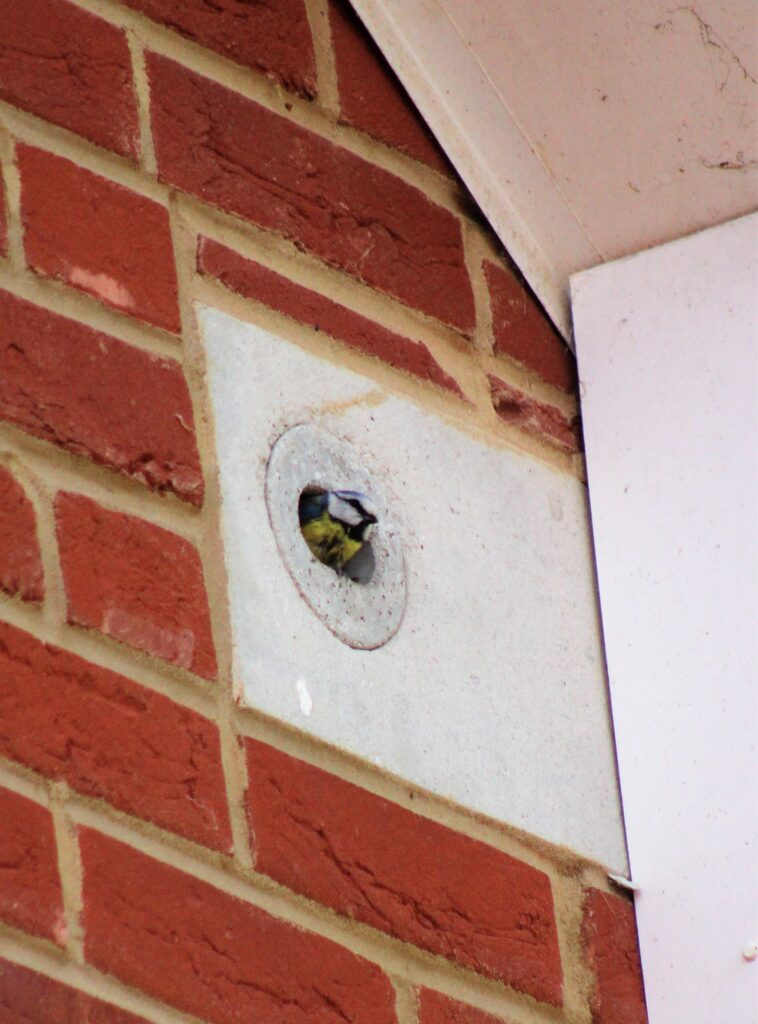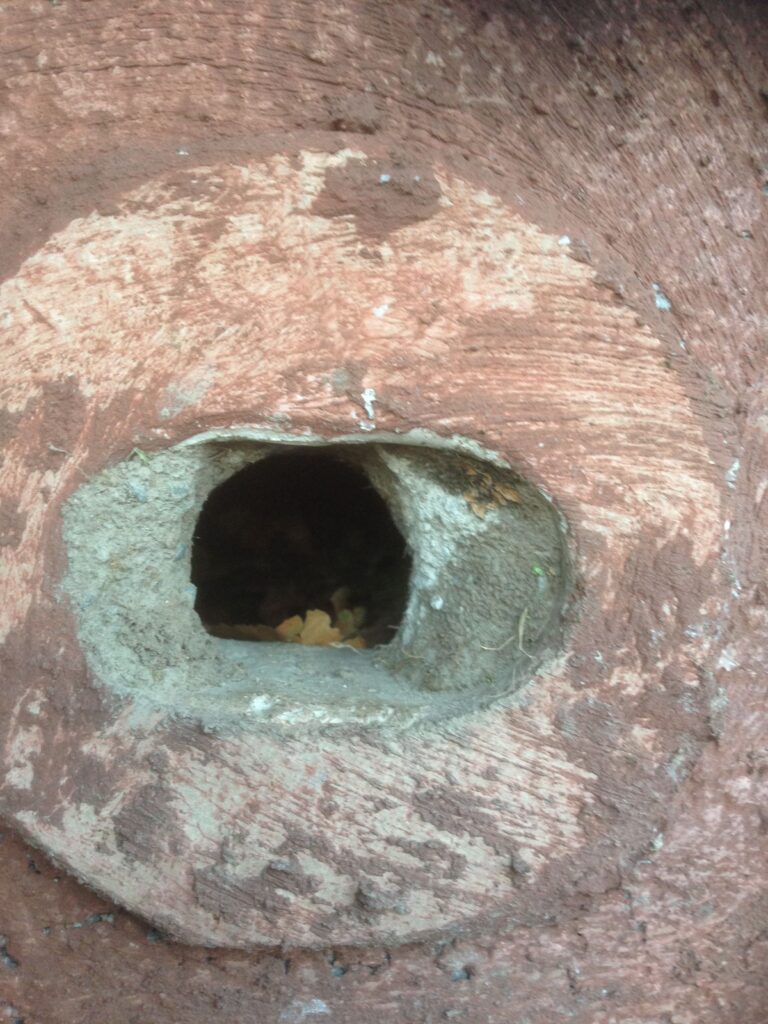Many UK bird populations have shown a dramatic decline since the 1970s and 80s, with species such as starlings (Sturnus vulgaris), house sparrows (Passer domesticus) and swifts (Apus apus) declining by over 50%. This is thought to be due to changes in land use and agricultural practices impacting food supply and the availability of suitable habitats. Changes in architecture have meant a reduction in important nooks and crannies that are utilised as nesting sites by species such as swifts, reducing reproduction rates in urban areas.
Providing suitable nest boxes has been shown to help increase reproduction rates for many species, helping to boost populations. Stephen Fitt and Mike Priaulx, members of the Swifts Local Network: Swifts and Planning Group, discuss the concept of ‘universal’ bricks, the British Standard key requirements on the inclusion of nest boxes within housing developments and current calls for a more specific national policy regarding these features.
Universal nest bricks
A British Standard BS 42021:2022 for integral nest boxes was published in March 2022. This sets out requirements for numbers, location, dimensions, materials, entrance hole size, and an administrative process to demonstrate implementation on site. This will enable integral nest boxes to provide nest spaces for a wide variety of species, such as house sparrows, starlings, swifts, house martins, and blue and great tits.
The standard also covers nest cups for house martins and swallows.
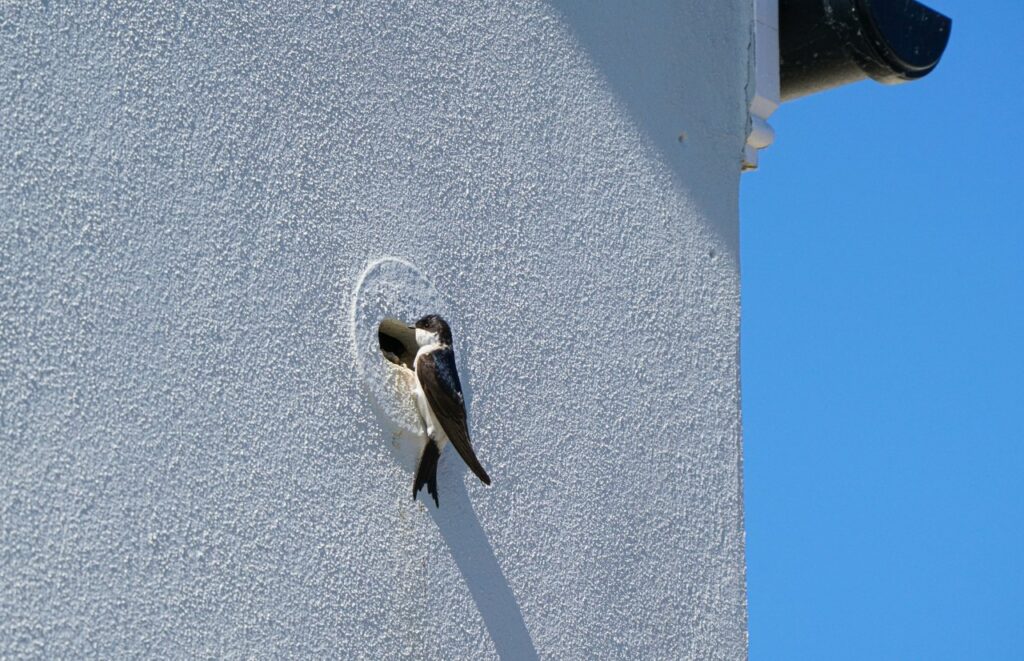
Some species-specific integral nest boxes are quite inflexible. Sparrow terraces, for example, are rarely fully occupied and are unpopular with other species. Deep nest bricks, such as those designed specifically for starlings, could cause a swift to become trapped within it.
Although swift bricks were designed initially to allow swifts to nest, these are now considered a ‘universal’ nest brick as set out in the NHBC Foundation report: Biodiversity in new housing developments: creating wildlife-friendly communities (April 2021). Section 8.1 Nest sites for birds (page 42) states: “Provision of integral nest sites for swifts is through hollow chambers fitted into the fabric of a building while in construction. Although targeting swifts they will also be used by house sparrows, tits and starlings so are considered a ‘universal brick’.”
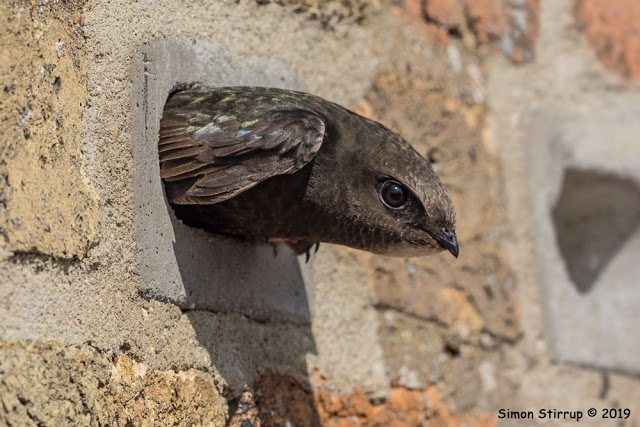
The British Standard sets out key requirements for integral boxes as follows:
- The number of integral boxes in housing developments – at least one per residential unit on average.
- The numbers of the above installed in larger buildings – to be proportionate to the mass and design; there is not necessarily an upper limit.
- In all but exceptional circumstances the entrance holes of all integral boxes should be 30mm x 65mm minimum to enable starlings to enter.
- The entrance hole should be located close to the base of the box to avoid birds becoming trapped within.
This ‘universal’ nest brick concept has also been described in an article by CIEEM, which references a January 2022 paper on this subject by the Swifts Local Network (SLN).
Local policy legislation has also begun to recognise this line of thinking, for example the Westminster Environment Sustainable Planning Document (February 2022), which in particular calls for: “‘swift bricks’ within external walls…Swift bricks’ are also used by house sparrows and other small bird species so are considered a ‘universal brick’. Integrated nesting bricks are preferred to external boxes for reasons of longevity, reduced maintenance, better temperature regulation, and aesthetic integration with the building design” (Species and Habitats, page 49).
The results from Duchy of Cornwall monitoring programmes confirm that by installing high numbers (an average of one per residential unit) of “‘swift/universal boxes’ in new-build developments, approximately 50% showed signs of occupation after five years, so it is highly likely that they will all be used during the lifetime of the building(s) they are situated in.”
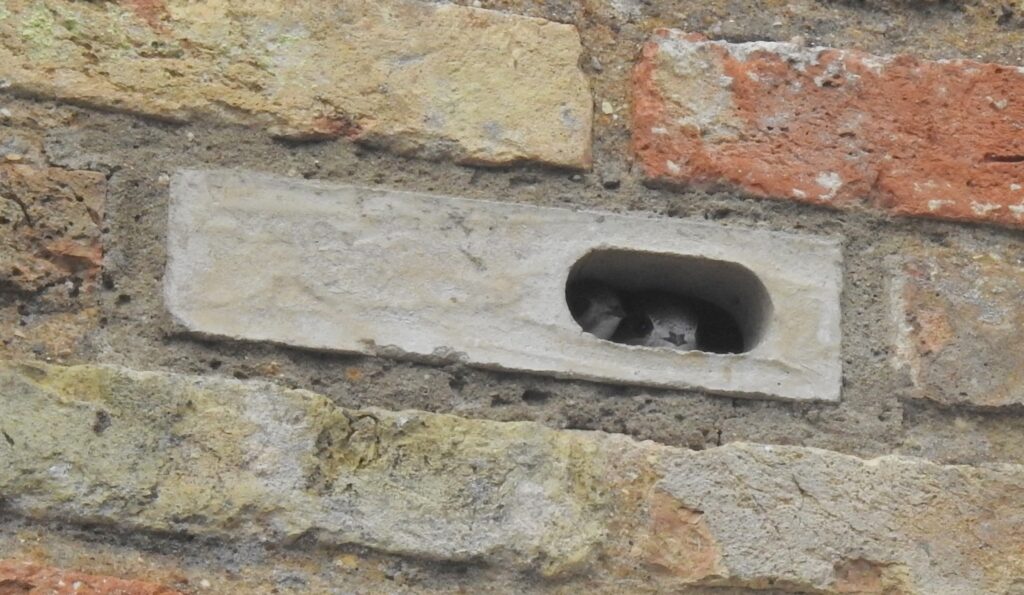
Many conservationists would like to see either a numerical value in the Biodiversity Net Gain methodology for these features for wildlife, or a separate strand to the national policy requiring these to be specified. The BREEAM environmental assessment has been following a similar approach for more than a decade.
Such features are already demanded by specific policies in some Local Plans, but other plans are still being published with no such requirements.
CIEEM highlight in the June 2019 issue of their In Practice journal the value of swift bricks to a wide range of small bird species, and provide readily available best practice guidance on the implementation of the bricks, including a recommendation for one nest space per dwelling on average (in accordance with the BS 42021:2022, and following on from RIBA guidance Designing for Biodiversity published back in 2013). While some local authorities such as Brighton are implementing this guidance, others rely on numbers derived from ecologists’ and planning officers’ advice, which can be very variable.
Some developers, Taylor Wimpey being one example, are publishing their own policies for biodiversity measures such as the installation of integral nest bricks.
Defra are developing a simplified Small Sites Metric for Biodiversity Net Gain, and the consultation on this held during autumn 2021 may provide a glimpse of the future as it asks about including a value for bird and bat boxes in the metric, although this has not appeared in practice as yet.
To find out about the swift nest boxes we sell at NHBS, check out our website.








